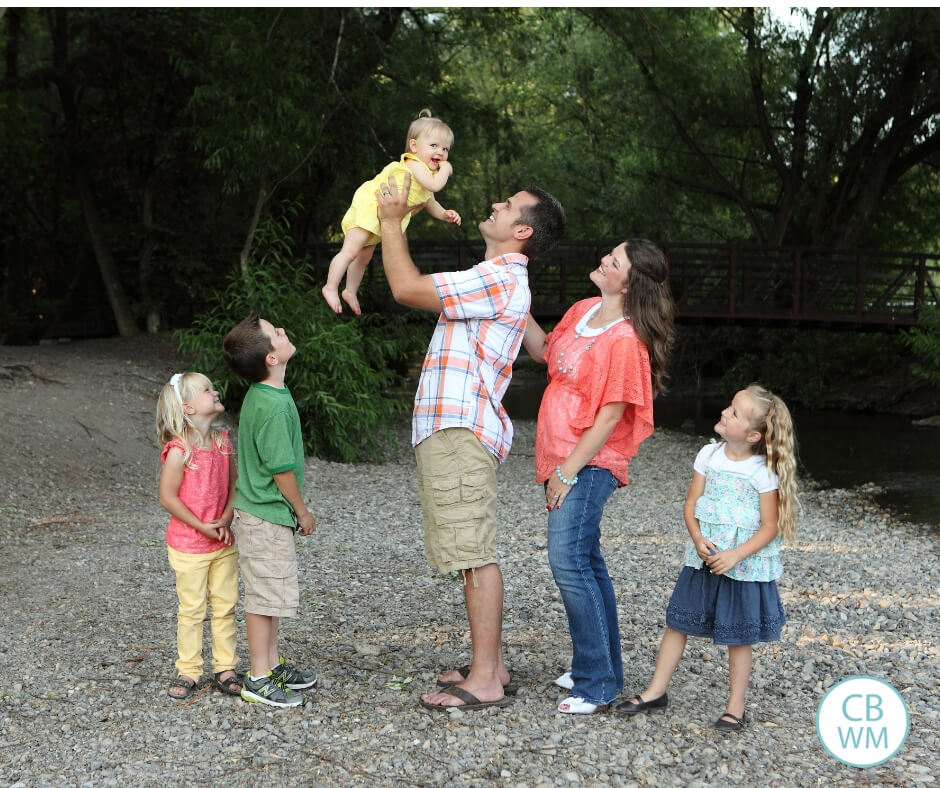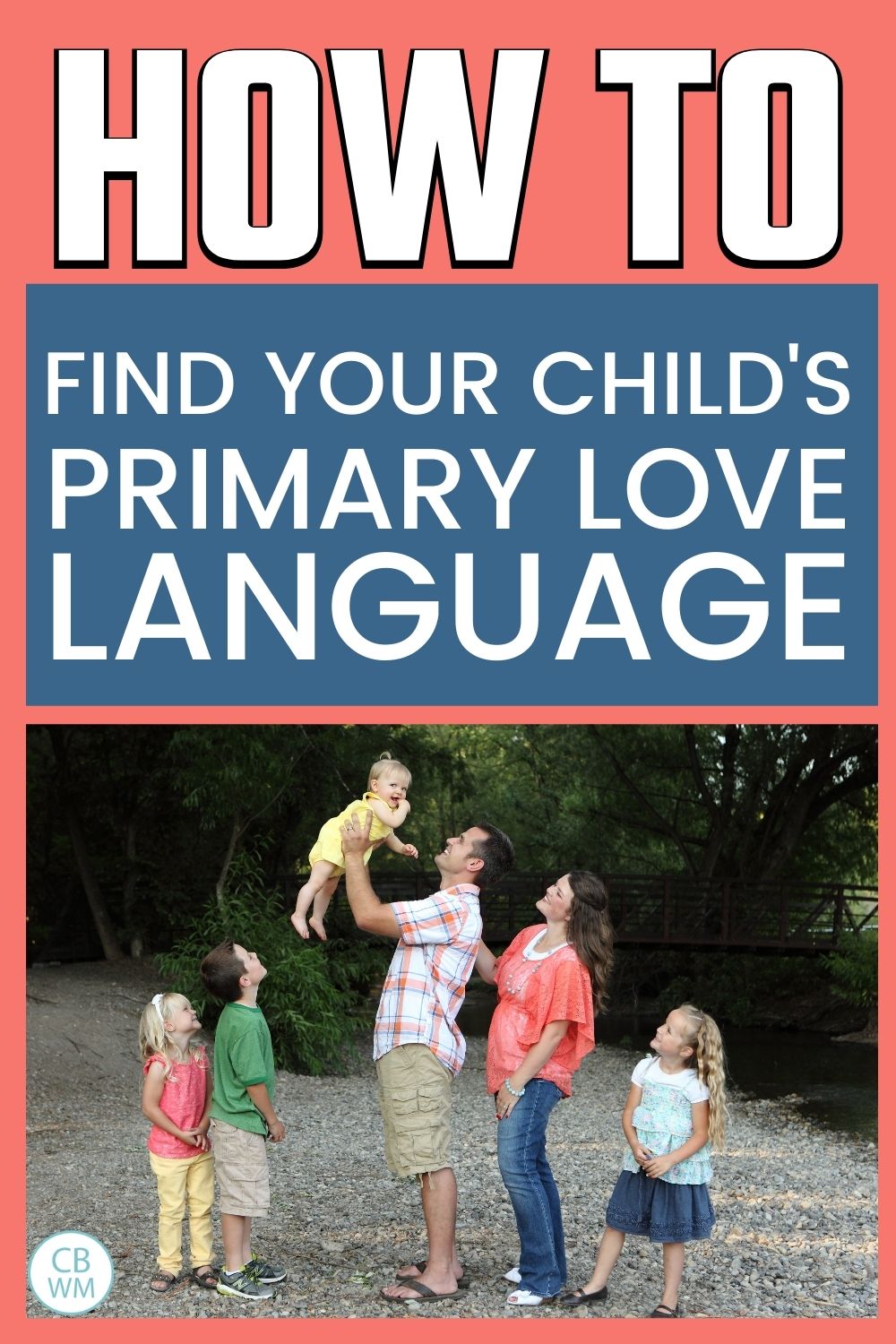Identifying Your Child’s Primary Love Language. Five steps to identify your kid’s primary love language so you know how best to show your child love.

We all feel love in different ways.
For one person, they might really feel loved if someone talks with them for an extended period of time, while for another person, they really feel loved if someone gives them a sincere compliment.
Knowing how your child feels love is super helpful. When you understand how your child feels loved the most, you can focus your efforts there. If your child needs physical affection, all the acts of service in the world won’t fill that love tank.
The 5 Love Languages of Children includes a section on identifying your child’s primary love language.
Remember that a child’s primary love language cannot be identified until the child is at least five. The authors also point out that a love language is not set in stone (page 108), and will often change during times like adolescence.
Post Contents
5 Steps to Identify Your Kid’s Love Language
There are five steps to identifying (starting on page 109)
1. See how child expresses love to you
Your child will likely express love in the way he wants to receive love.
This is especially true for the 5-8 year old crowd. If you have read my previous posts on this, you will know that my suspicion for Brayden’s primary love language has always been words of affirmation.
He definitely fits into that on how he expresses himself.
I remember when he was six. You have never heard a more grateful child when I would do his laundry, make his food, drive him somewhere–he was the most thankful boy ever.
I don’t think it is just good manners–though I would love to claim it as such. I think it is his love language.
2. See how child expresses love to others
What does your child do for others?
When he has a teacher he likes, how does he want to show it? Does he want to do something nice for her? Does he want to tell her the things he appreciates about her?
What about siblings? How is love shown to the siblings?
This can be obvious if the child is into gifts as signs of love. If it is words of affirmation, however, you won’t know what he is saying to a teacher unless she tells you about it.
Children will be more affectionate with family members than with those outside the family, so noticing ways your child chooses to express gratitude and appreciation to others provides valuable insight into how he wants to be shown love himself.
Because he feels loved when those things are done for him, he chooses those things to show love to others. It is what he understands.
3. Notice what your child requests from you
Does your child ask for more time? Does he ask for compliments? He will most likely ask for most what he desires most.
If you are really cognizant of showing love in all five ways, you might not have your child asking for things on a regular basis.
You will probably, find, however, that when your child is upset, she will seek love in her primary love language.
This could be in a hug. This could be just being with you. This could be asking you to do something for her, etc.
4. Take note of what your child complains about most
Your child might have a theme of complaint–time spent with him, never saying anything nice, etc. This is a clue as to what he is needing more of.
Again, if you are making an effort to express love in the many different ways, you might not get complaints about things not being done unless the child is in a highly emotional state.
I would also note that a parent serves children a lot. Your entire day is essentially dedicated to doing things for your child, especially young children who are not capable of doing much independently.
You make their food, do their hair, clean their clothes, help them clean their rooms, help them with homework, drive them places, carry them places…it is never ending.
So if your young child has a primary love language of acts of service, you might not ever hear complaint of that not happening.
You could see some jealousy come up if a younger sibling is around. The younger the child, the more you have to do for that child. We also tend to ask our older children to step up and do more for themselves when we get a new baby in the house.
So you might see some complaining about you not doing things for your child if acts of service is the primary love language and you are doing more for other siblings than for that child.
5. Give a choice
If you are unsure still, you can offer two choices of activities that would indicate a preference of love with one or another.
Do this every so often over the course of several weeks and take note of the answers. It should give you a clue into the hierarchy your kiddo has for the different love languages.
Examples given in the book are:
- bake you a pie (service) or go to park together (time)
- wrestle (physical) or read story (quality–though I must say if you cuddle during story time, it could be physical)
Conclusion
This is a quick summary of the five steps in the book. The book has more details. These steps can help you identify the primary love language of your child.
Remember, you want to be multi-lingual, but having an idea for the love language of your child helps you make sure you give extra focus to that language so it doesn’t get neglected.
It also helps in times of distress–when your child needs comforting. The primary love language will speak the loudest to him at those times. It also helps you to avoid using that love language negatively.
Related Posts on Love Languages
- The How and Why of Identifying Your Children’s Love Language
- Children Need to Feel Loved in their Own Way
- How To Show Your Child Love Through Acts of Service
- How to Show Your Child Love Through Gifts
- How To Show Your Child Love Through Physical Touch
- How To Show Your Child Love Through Quality Time
- How to Show Your Child Love Through Words of Affirmation
- Speaking All Five Love Languages
- 3 Ways to Show Your Child Unconditional Love

This post originally appeared on this blog in September 2011

